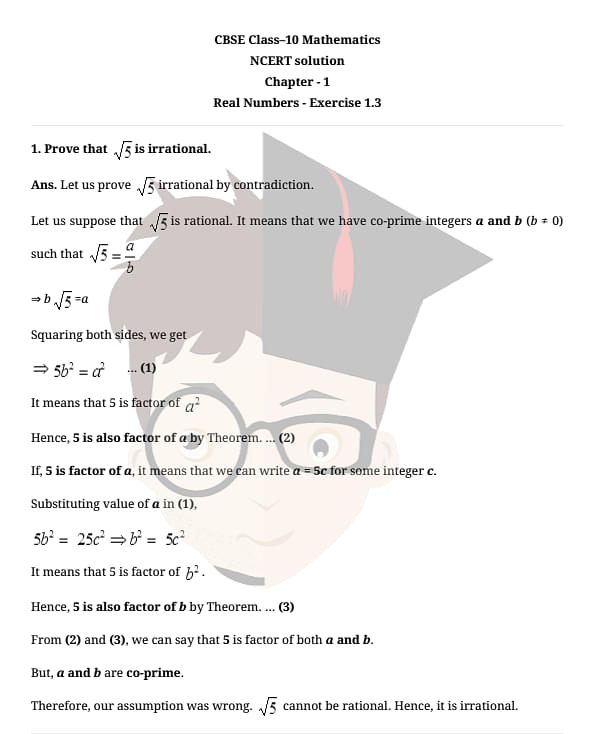
Jasmine Grover Content Strategy Manager
Content Strategy Manager
NCERT Solutions for Class 10 Maths Chapter 1 Real Numbers Exercise 1.3 is covered in this article with a detailed explanation. Chapter 1 Real Numbers Exercise 1.3 deals with proving that root p is irrational. The 3 questions of the exercise cover the concept of irrational numbers.
Download PDF NCERT Solutions for Class 10 Maths Chapter 1 Exercise 1.3
Check out the solutions of Class 10 Maths NCERT solutions chapter 1 Real Numbers Exercise 1.3





Read More: NCERT Solutions For Class 10 Maths Real Numbers
Check out other exercise solutions of Class 10 Maths Chapter 1 Real Numbers
Also Read:
| Class 10 Chapter 1 Real Numbers Topics | ||
|---|---|---|
| What are Real Numbers? | Euclid’s division Lemma | Real Numbers Important Questions |
| Root 2 is an irrational number | MCQs for Real Numbers | Real Numbers Formula |
Also Read:
| CBSE Class 10 Mathematics Study Guides | ||
|---|---|---|
| NCERT Solutions for Class 10 Maths | Math MCQs | Math Study Notes |
| Math Formula | Difference between in Maths | Arithmetic |
| Calculus | Trigonometry | Mensuration |






Comments